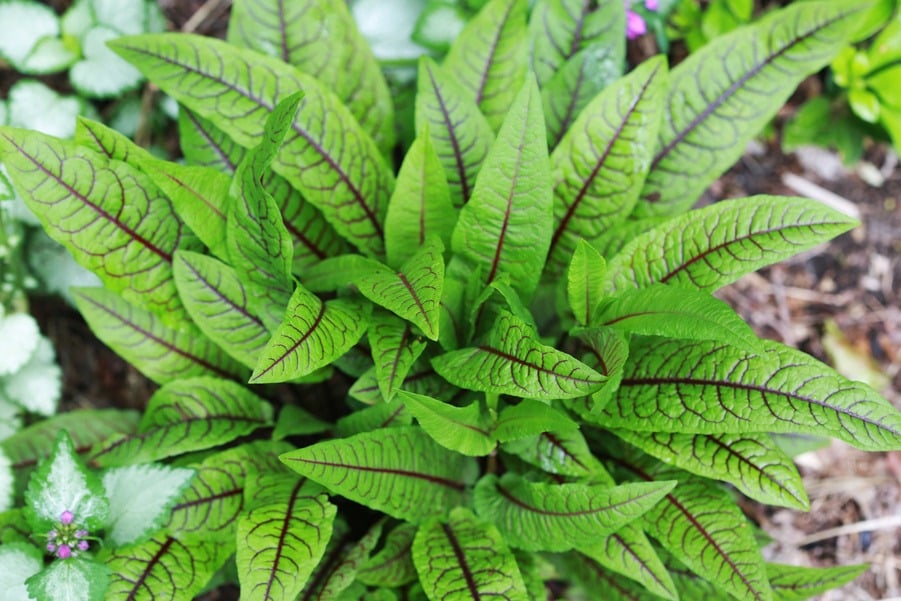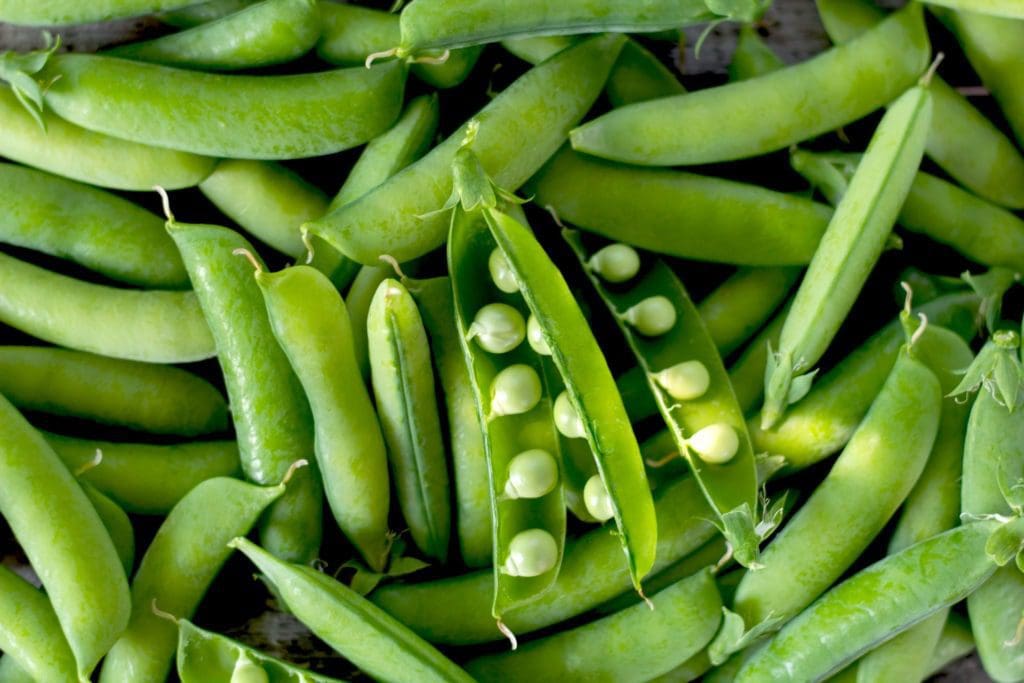Spring Produce Guide: Fruits and Vegetables
If you regularly shop at the farmers’ market and make use of our Seasonal Food Guide, you’ve likely spent the past months eating a lot of apples, potatoes, squash and other hardy fruits and vegetables that keep all winter long. But with spring, we’re finally beginning to see the light. Suddenly, it’s all greens, asparagus, leeks and peas, plus pretty-in-pink radishes and rhubarb.
While spring doesn’t quite provide the drop-everything deliciousness of summer’s sweet peaches and juicy tomatoes, the fresh flavors are very welcome. And these flavors tend to go very well together, which is why you often see recipes combining them, like these braised artichokes and leeks from Serious Eats or Bon Appetit’s eggs with morels and ramps and fava, fresh pea and asparagus salad. Here, we round up some of the in-season items you can enjoy for the next few months, together or on their own.
Artichokes
Getting through an artichoke’s thorny leaves to its many-layered heart may seem like just too much work for the reward. But it’s worth it: these vegetables are best enjoyed in spring, since they are especially sweet and tender during this time. Artichokes are often steamed whole and served with melted butter or aioli. The hearts can be deep-fried, marinated or used as a topping for salads, pasta and pizza. Baby artichokes, easier to prep as their leaves are not yet prickly, can be used the same way as the hearts of the mature vegetable: steamed, grilled, fried, you name it.
Get more information about cooking and shopping for artichokes in the Real Food Encyclopedia.

Asparagus
Despite its year-round appearance in modern American grocery stores, asparagus is at its prime in the spring. Most recognizable in its green version, this vernal veg also comes in purple, said to be sweeter and more tender, and white, the result of limiting sunlight exposure during cultivation. It also grows in nature: wild asparagus is the thinnest variety (and with asparagus, the thinner the vegetable, the more tender it is). Asparagus can be cooked in a variety of ways — roasted, grilled, steamed or shaved thin and eaten raw — and is classically served with hollandaise sauce. It can also be puréed into a bright, springy soup.
Get more information about cooking and shopping for asparagus in the Real Food Encyclopedia.
Fava Beans
Fava beans have a short season, showing up as early as February and disappearing by early June. They look like massive green beans — and thanks to their thick, double-layered pod, they are kind of a pain to prepare. But the creamy, nutty flavor is worth the work, especially since they won’t be around for long. Fresh fava beans are often paired with mint in salads; they also go well with poached eggs and can be grilled whole for a taste of summer. To cut down some of the prep work, you can substitute half the amount favas for asparagus, peas or another legume.
Get more information about cooking and shopping for fava beans in the Real Food Encyclopedia.
Fiddleheads
The curlicue coiled shape of the fiddlehead might look more decorative than delicious, but the edible shoots of the fern plant have a nutty, slightly bitter flavor that’s similar to asparagus. They are one of the very first veggies available in early spring — and they are almost entirely foraged, meaning you will probably see them for sale only at farmers’ markets and specialty stores. Fiddleheads are widely enjoyed in many Asian countries; if you can find them, try preparing them as tempura, in a Chinese stir-fry or in a Himalayan curry.
Get more information about cooking and shopping for fiddleheads in the Real Food Encyclopedia.

Greens
Spring greens are among the earliest signs of the new season. Many varieties are harvested right about now. Arugula, known for its peppery bite, is as common on top of pizza as in a classic salad. Dandelion greens, a common weed, actually have a bitter flavor that many enjoy sautéed or braised. Mâche is naturally frost-resistant and can be grown in the earliest part of the season; its mild flavor is wonderful in salads, soups or even smoothies. Sorrel will catch your eye with its bright-red-veined leaves — and your tongue with its tart, lemony flavor, whether eaten raw in a salad or cooked similarly to spinach. (It’s the main ingredient in schav, a type of beetless borscht.) Watercress’s lovely little leaves pack a crisp, peppery punch. It’s delicate, however, so is best enjoyed raw, as a base for salads or layered onto sandwiches.
Get more information about cooking and shopping for lettuce in the Real Food Encyclopedia.
Leeks
Leeks are the cousins of garlic and onions, with a sweet, mildly pungent flavor. They grow well in colder temperatures, making them ideal for a spring harvest. Most recipes call for the white and light-green stems, which are great braised or grilled and go particularly well with cheese. Trim off the dark green tops, which are too tough to eat, and use them for making stock.
Get more information about cooking and shopping for leeks in the Real Food Encyclopedia.
Morels
Morels are like four-leaf clovers: they are rare, commanding upwards of $30 a pound, and spotting them is a lucky sign of the warmer weather to come. If you aren’t a forager (most morels are found wild), you’re most likely to encounter them at the mushroom stall of a farmers’ market or your local gourmet food store. Whatever way you find them, keep in mind that they must be cooked — raw morels are mildly poisonous. Morels pair well with tarragon and are often tossed with pasta or used as a pizza topping.
Get more information about cooking and shopping for morels in the Real Food Encyclopedia.
Nettles
This roadside weed, often called the “stinging nettle,” doesn’t necessarily sound enticing. But once soaked or cooked — to remove the irritating chemicals — the stem and leaves are actually delicious. The best time to harvest nettles (or buy them from an expert forager) is when they’re young and the stems are tender, sometime between late winter and early spring depending on where you live. They can be cooked similarly to spinach, folded into a breakfast frittata, tossed with pasta, stuffed in lasagna or in the sauce of a fun green shakshuka. You can also dry the leaves into tea or chips.
Get more information about cooking and shopping for nettles in the Real Food Encyclopedia.

Peas
While frozen peas can be found year-long, fresh garden peas start popping up in April and are consistently available through June. They are often served with other spring vegetables like morels, leeks or fiddleheads, and can be braised alongside meat or blanched and served crisp. This time of year, you’ll also find beautiful, delicate pea tendrils (or “shoots”) at farmers’ markets; these are lovely added into salads or sautéed.
Get more information about cooking and shopping for peas in the Real Food Encyclopedia.

Radishes
These crunchy, spicy roots can breathe fresh life onto just about any plate: shaved on top of tacos, roasted for a side dish or dried crisp into chips. And though different varieties are available for much of the year, spring’s colorful radishes are generally sweeter and crunchier. For the full effect, serve them on a crudité platter or use them to scoop up butter. (You can even coat them in it!)
Get more information about cooking and shopping for radishes in the Real Food Encyclopedia.
Ramps
Much of the ramp buzz (and yes, there really is ramp buzz) comes from their fleeting nature. They have a very short season — typically April and May — and are mostly only found at the farmers’ market or in the wild. With a peppery and pungent flavor somewhere between onion and garlic, ramps add bite to pesto or a springtime risotto, and can be used as a seasonal substitute for any recipe that calls for spring onions, scallions or garlic.
Get more information about cooking and shopping for ramps in the Real Food Encyclopedia.
Rhubarb
Rhubarb, though a vegetable, is one of the first fruit-adjacent options to appear at farmers’ markets — starting as early as January. The poisonous leaves are inedible, but the pink-and-red stalks, quite sour on their own, are often cooked with sugar and citrus to balance out the acidity. One of the most common uses of rhubarb is for compote, which can be served with everything from ice cream and baked goods to roast meats. In pies and jams, rhubarb is often paired with strawberries, which, depending on location, can start to appear as early as mid-spring.
Get more information about cooking and shopping for rhubarb in the Real Food Encyclopedia.
More Reading
Can rye growers get consumers and retailers excited about rye?
May 19, 2025
How one New Jersey farm grows food year round
April 3, 2025
Returning seeds to their ancestors: Revitalizing biodiversity and foodways through plant rematriation
March 24, 2025
Fermenting and freezing are your secret weapons for preserving root vegetables
October 17, 2024
Quinces are due for a renaissance
September 16, 2024
Six unusual greens to try
September 4, 2024
These 5 new cookbooks will help you master late-summer eating
July 29, 2024
Celebrate seasonal eating with our 5-night late-summer meal plan
July 22, 2024
Some foods are styled as ‘climate saviors.’ Who are they saving?
May 21, 2024
Protecting endangered foods one bite at a time
May 6, 2024
